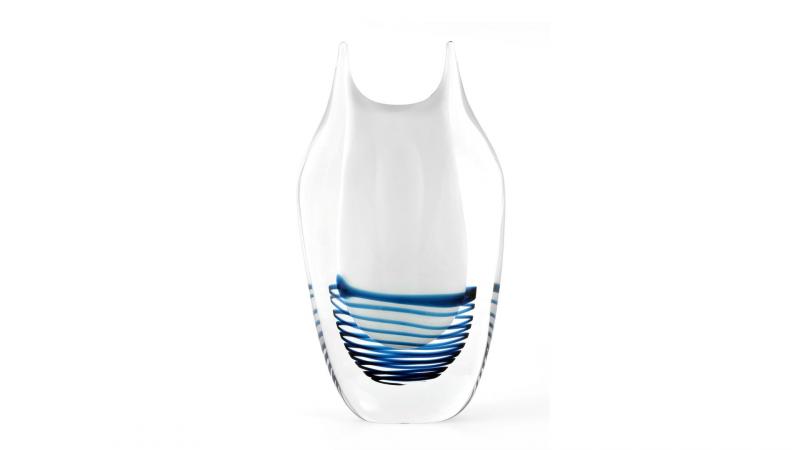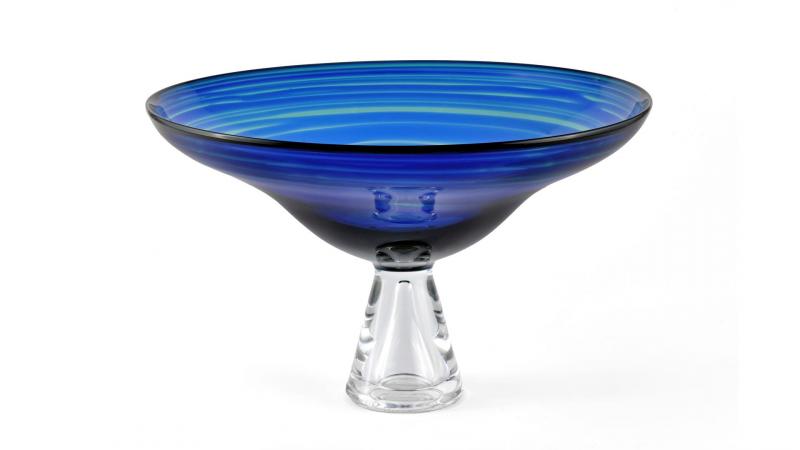Although the city of Leerdam is best known for its popular semi-cooked cheese, it should be equally recognised for the glassworks created by the Royal Dutch Glassworks.
Starting from 1915, the “N.V. Koninklijke Nederlandsche Glasfabriek Leerdam”, which was founded in 1765, focused on modernist and innovative productions conceived by three architect-designers: the Dutchman Hendrik Petrus Berlage (who had already created models for the French Pantin and Baccarat glassworks), Karel Petrus Cornelis from Basel and the famous American Frank Lloyd Wright. More than 15 years before the birth of Scandinavian design, the Leerdam factory was industrially producing table services with clean and functional shapes. Designers also designed artistic works that were blown on the fly and crafted in an artisanal manner.
The designer Floris Meydam (1919–2011), originally from Leerdam, became involved with the glassworks in 1935; he was an employee of the design department and became director of it in 1949. During the 1958 Universal Exhibition in Belgium, the grand price was awarded to the Leerdam pavilion. The three pieces exhibited date from this same year and are part of the “Unica” series (started in 1922), which resulted from close collaboration between the designer and the glass-blower in charge of blowing and shaping the crystal. These unique pieces were among the most beautiful works designed by the artist, who created forms with clean lines and used a variety of bright colours. The elegant outline of the single-flower vase is highlighted by the use of a bright yellow. The oblong and slightly convex vase is inlaid with a mass of white glass, the lower portion of which is wrapped with a blue-green ribbon. The enamelled glass is covered with several layers of clear glass, which creates a magnifying glass effect and makes the piece appear solid. For the two lateral extremities of the mouth, the designer was inspired by the "horns" on the head of the manta ray[1]. The goblet’s large circular mouth narrows towards the bulging base, giving the piece a sinuous profile. The horizontal nature of the container is counterbalanced by the vertical nature of the cone-shaped foot, which is embedded in a cuberdon-shaped air pocket[2]. The blue glass of the goblet is inlaid with threads, ribbons and large areas of aquamarine.
Each piece bears the engraved signature "Leerdam Unica Fmeydam", as well as the letters "MB" followed by a number. The latter indications correspond to a marking system used specifically for glassware. The letters correspond to the piece’s creation and production date – in this case, 1958 – and the numbers indicate the order numbers for each piece in the series. Thus, of the 1679 pieces produced in 1958, the yellow vase is the 440th creation, the goblet the 1013th and the vase with inlaid decoration the 1081th.
These three pieces pay tribute to Floris Meydam, who passed away in 2011, and highlight the astonishing contemporaneity of Dutch glass-making.
[1]The manta ray is a flat-bodied fish with fins shaped like wings. It is called the “devil of the sea” because its head bears two “horns”.
[2]The cuberdon is a traditional Belgian cone-shaped red-pink sweet, which consists of sugar, acacia resin and raspberry flavouring.


